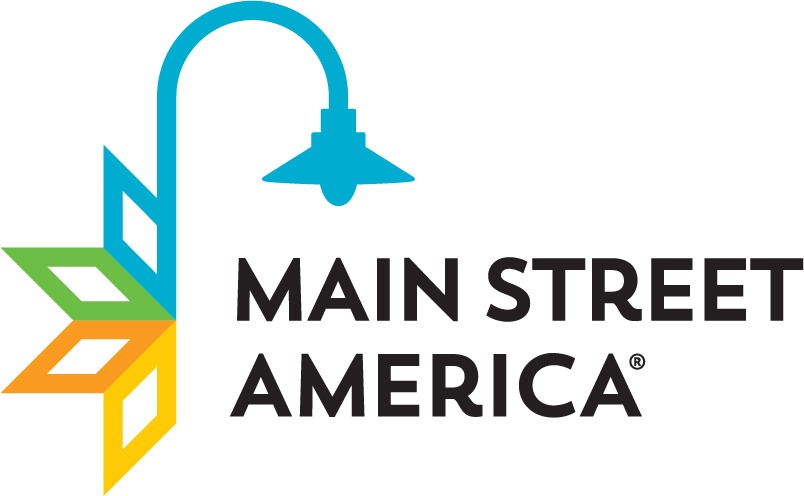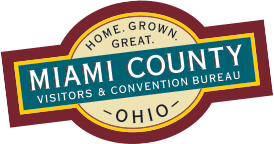OLD POST OFFICE
29 W. MAIN STREET
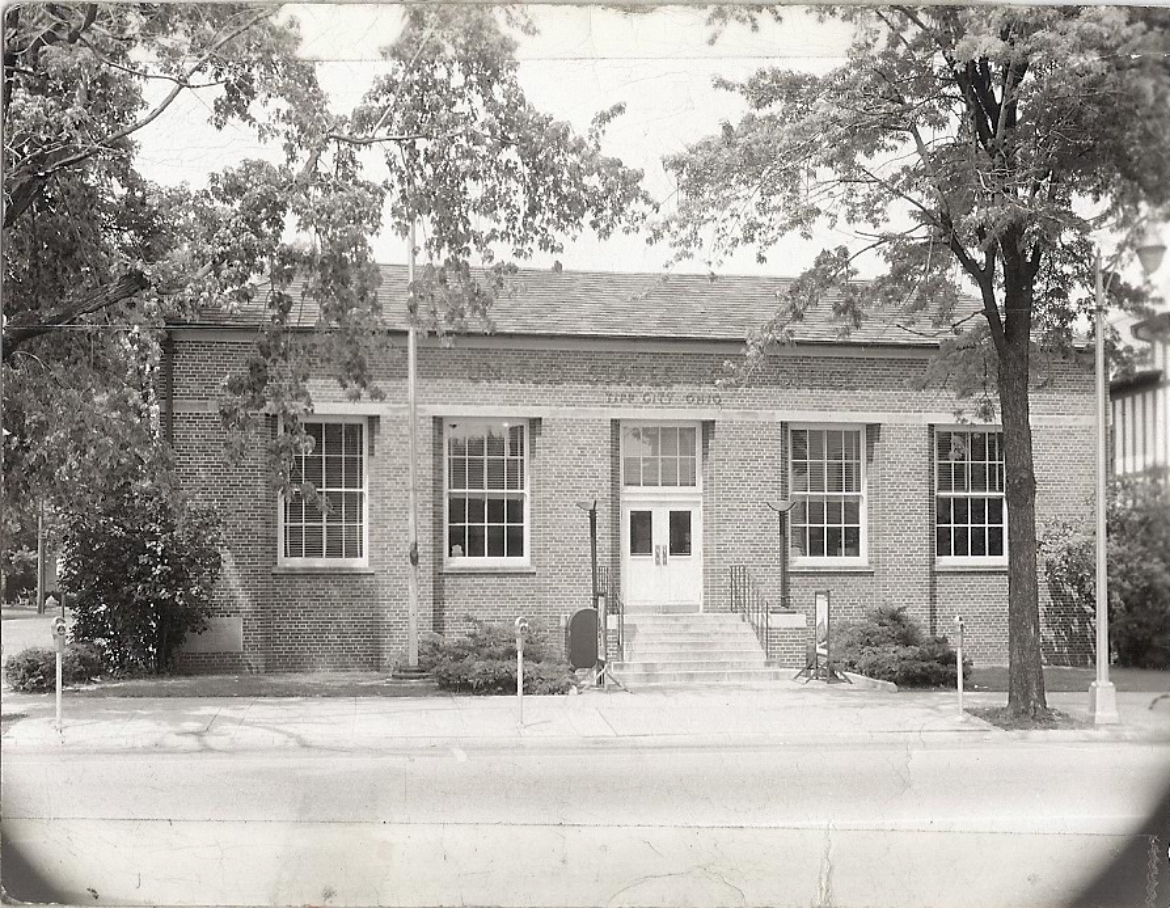
In the late 1800s, the site of the future Post Office was used for horse stables and a woodshed on the Rouzer’s property.
Local legend claims that Civil War “Colonel” D. M. Rouzer buried the horse he rode in the war on the property. According to the story, the “Colonel’s” widow, Mary Rouzer, left a will that prohibited any building to be constructed over the horses grave. However, in an agreement made in 1904 between Mrs. Rouzer and her neighbor, Ellis Kerr, regarding the removal of the stables and woodshed, there was no mention of the buried horse. In the late 1900s, when the post office was being renovated, they refused to build overtop the spot where the horse was supposedly buried. Today, the spot remains covered in only grass. It’s still a mystery if the horse is truly there.
The building which now stands on the property started construction in 1936 and opened to the public in 1939.
In that same year, the Post Office and War Department officials conducted an investigation of post office clerk Arthur Judd when it was revealed that he gave a speech about temperance in a church four years earlier. This was prohibited because Mr. Judd was also a member of the school board and was prohibited from “hiring a hall” to give a political speech. The results of the investigation are unknown, but Judd retired in 1964 in good graces.
In 1993, the Post Office moved to 520 N Hyatt Street and Royal Crest Insurance moved into the building a few years later.
In 1995 Dayton-based and nationally recognized rock bands The Amps and Guided By Voices performed a concert in the vacant Post Office Building to support The Amps successful single, and love song to Ohio, “Tipp City”.
CHAFFEE-BUTLER BUILDING/OPERA HOUSE
28-34 E MAIN STREET
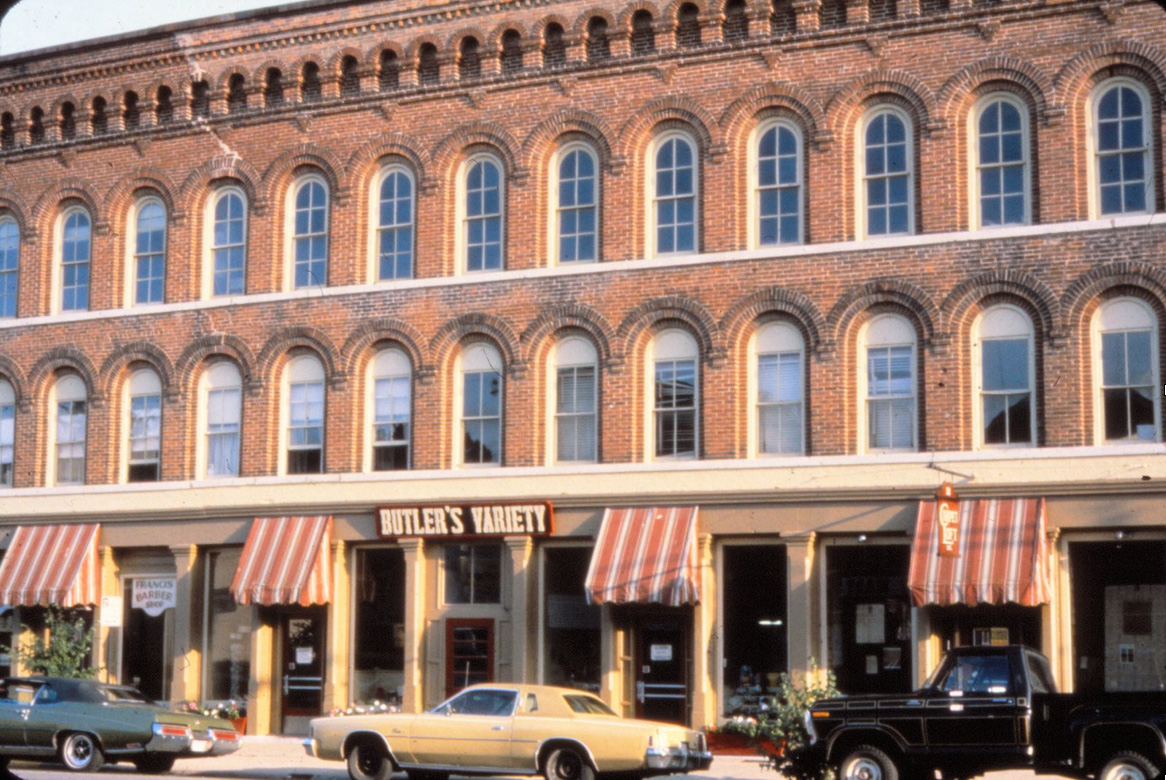
The building that would eventually become the Opera House was originally built by a Mr. Hoagland in 1840 and operated as a general store until he went into the liquor business and opened a distillery.
In 1852 Sidney Chaffee purchased the distillery business and the two story building, then began expanding it upward and westward. The second and third floors were constructed to contain an Opera House, then named Chaffee’s Hall. At one point Chaffee’s liquor company was caught up in a scandal for not paying taxes.
In the 1860s, Chaffee moved to Nebraska, and later had to return to Tippecanoe on business. In order to get to the train station, he had to cross the Missouri River, which was frozen over at the time. Unfortunately, he took the wrong path across the ice and he drowned.
The Opera House presented operas, concerts, recitals, traveling medicine and minstrel shows, melodramas, and plays (one of which included an actual live horse that had to be led upstairs.) The Opera House held its last show in 1913. The cast of the final performance wrote the following on wall: “Professor Richton’s Wonder Show, here one week to big biz as usual.”
The building has served many purposes over the years.
- It was used as a roller skating rink from in the 1880s. In 1885, one of the enormous chandeliers fell on the skating rink resulting in a few minor injuries.
- Tippecanoe High School graduations were held here until 1915.
- A basketball team, The Tippecanoe Triangles, played in the Opera House in the 1920s.
- One section of the building served as the headquarters for the Women’s Relief Corps for years.
- The first meeting of the Tipp City Rotary Club (which still meets today in the Monroe Building at 4 E. Main St.) was held here.
- Other clubs such as The Grand Army of the Republic and the American Cadets also met here.
- It was the temporary home of a Baptist church.
- Civil War reenactments were staged in the Opera House.
The ground floor spaces have been used for drug stores, clothing stores, grocery stores, variety stores, general stores, paint and wallpaper stores, picture shows, duck-pins (bowling), barber shops, plumbers, card rooms, offices, beauty shops, and a delicatessen.
TIPP MONROE COMMUNITY SERVICES
3 E. MAIN STREET

Originally known as the City Building, this structure was built in 1874 by Charles Trupp. It had housed a 100-gallon Chicago chemical fire engine, which was moved to city park in 1878.
It was considered the city (then known as Tippecanoe) “nerve center” since it was the site of police and fire departments, town hall, jail, post office, the first city library, and a place for social gatherings. In 1990, the city’s municipal offices moved out of the building and into a new facility on South Garber Drive.
The building has been occupied by Tipp Monroe Community Services since the 1990s and also was home to the Chamber of Commerce for several years in the 1990s and early 2000s.
THE VOCKE BUILDING
35 E MAIN STREET
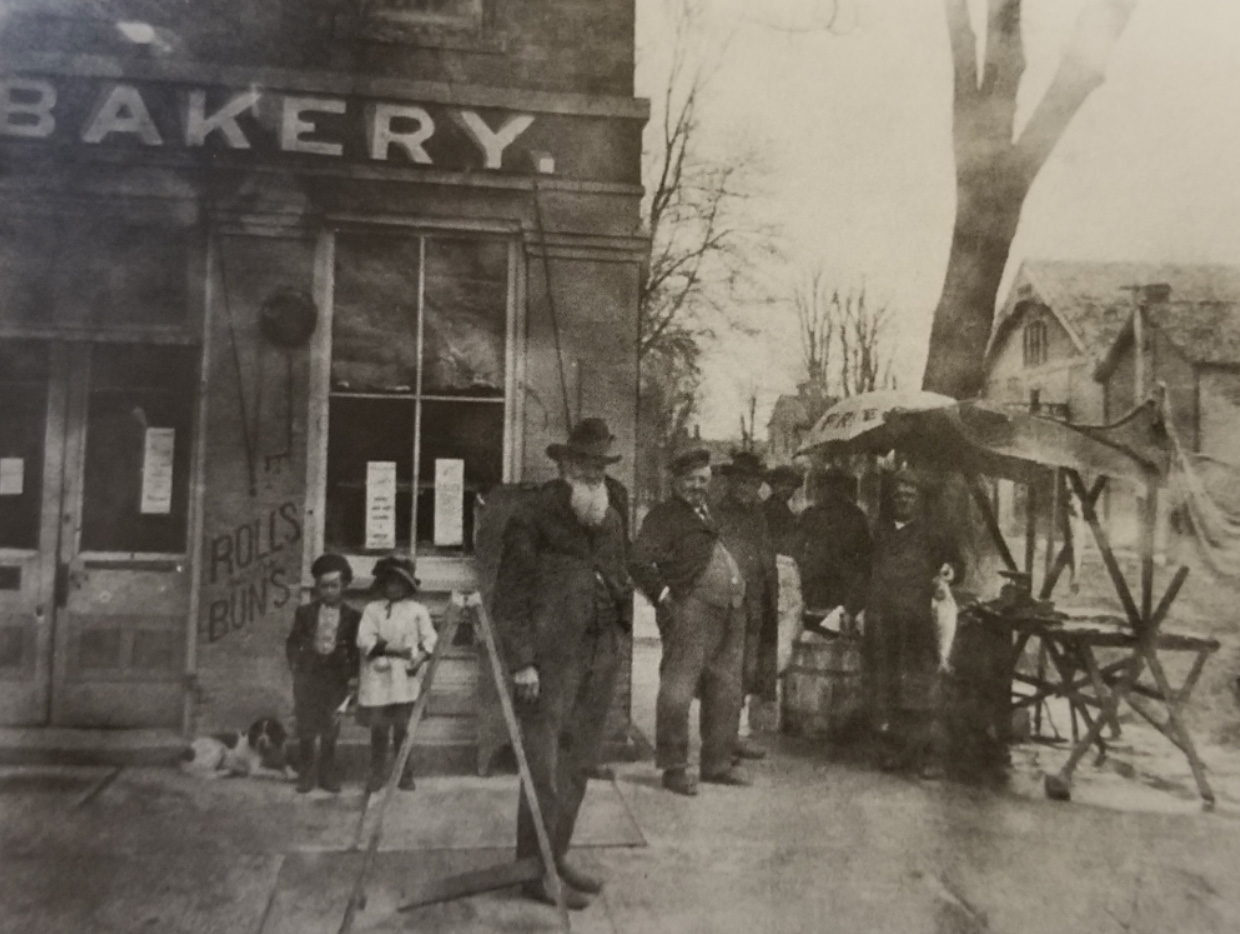
The Vocke Building was constructed in 1835 as a general store that was first operated by Sidney Chaffee. A later proprietor of the general store, A.M. Hecker operated a general store in the building between 1875 and 1898.
The King’s Bakery (pictured here), along with a cobbler, were located in the building between 1898 and 1906. A confectionery and ice cream parlor owned by Pop Jackson was housed his until 1911. Then it was a tailor shop.
The upper floor was the home for several clubs. The Thistle Club headquarters was in the upstairs room from 1892 to 1969 and The Junior Lodge was located here from 1920 to 1928.
Beginning in the 1930s, a succession of restaurants operated out of the lower floor of the building including the Charles Priller restaurant, Dunnick’s, Polly’s Confectionary, Lombardo’s, Roberta’s, and Rohrer’s Family Restaurant.
The Coldwater Cafe was the last restaurant to be located in the building when it operated there between 1994 and 2008 when it moved to its current location on the same city block.
The Hotel Gallery
101-109 East Main St

In 1852 Andrew Cotral erected the first portion of the hotel building on Main Street east of Second Street. Later, the building was expanded to the corner of Main and Second. At its peak, the hotel boasted 28 rooms, but had just one communal bathroom.
The hotel was later owned by C.M. Kauffman and then David Carles, who operated it as a hotel, tavern, and billiard parlor under the name Carles House. It was bought by John Nunlist in 1877, who continued running it as a hotel until 1925. It was known as the City Hotel from 1898 to 1911.
Clyde Livingston, a carnival concession owner, shot and killed himself in the lobby of the hotel for unknown reasons.
At one time, there was a porch in front where bands would play on special occasions.
The building has been the home for many businesses over the years, and it is large enough that more than one at a time were located there even while it was a hotel.
Between 1898 and 1911, the corner room was a barbershop (run by Bake Staup and later Freddie Oakes). Then it was a billiard parlor, an automobile dealership (owned by Bill Dreams), and an A & P Grocery.
Beginning in 1925, the building housed a jewelry store, first operated by Charles Coble and then by Ralph Warner starting in 1937.
In 1930, Paul and Richard Stile’s bought the building and opened the Style’s Shoe Store. They named the store Styles instead of Stile’s as a sort of pun because they sold sold stylish shoes.
Several restaurants and bars have operated out of the building, including Ford Yount’s restaurant and The Maple Restaurant (which was run by Mary Neil and then by George Schram).
Other businesses located here have included The Potter’s House coffee shop, Hampton Hill Collectibles, Tipp City Cyclery, Morning Sun Florist, The Time Golf Company, the Angel Antique Emporium, and Craft Stoves.
The building was purchased by its current owner, Steve Watson, in 1987. He and his wife Sally operate it as a collection of shops and a community gathering place.
BURWELL BUILDING
111 – 113 E. MAIN STREET
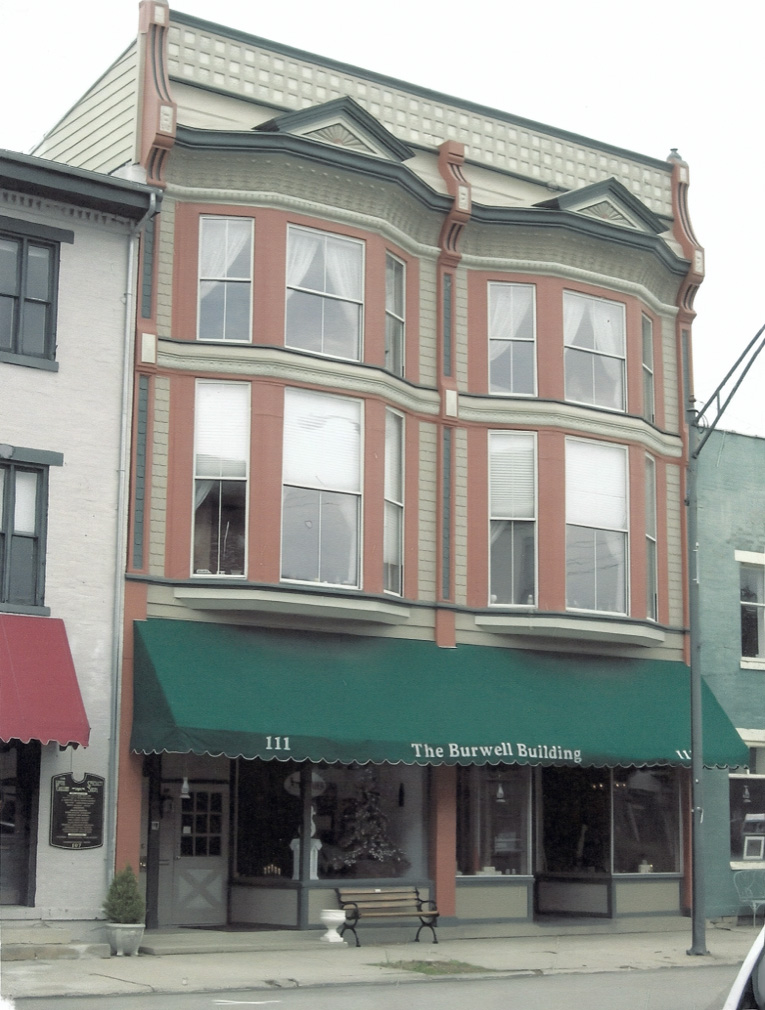
The Burwell Building was constructed in 1880. This is a three-story structure with two commercial units on the street level and living quarters on the top two levels. The center of the building is pierced by a skylight that provides exterior light and air to each interior room. The large bay windows with carved decorative trim have an excellent southern exposure for studio purposes. The Italianate and High Victorian influence is accented by the detailed tin work on the exterior.
John Burwell designed and erected this building especially for his wife and son, Ralph, an artist-photographer who was an 1899 Tippecanoe High School graduate. The Burwells were the only residents of the upper floors and the interior remained unchanged through 1950s.
The building was occupied by the Burwell family from 1880 to 1950. The upper two stories were used as the Burwell home and the street level was originally used as a studio by Ralph. The East Room of the street level was occupied by grocery stores from at least 1898 to 1956, including Gibson’s Confectionary in 1908, M.B. Hines Grocery in 1921, and Van Cleve Grocery from at least 1941 though 1956. This portion was also occupied by Miami Budget from circa late 1930s to 1940 and City Loan and Savings Company from approximately 1940 to at least 1965.
The West Room of the street level was occupied by a millinery in 1898. In 1911, it was a music store owned by Preston Miller where young folks gathered around his player piano to sing songs or listen to him play the violin. The West Room was later occupied by beauty shops including Colonial Shoppe Coiffures (1965), Ruby’s Beauty Salon and The Hair Designers. Other businesses known to have occupied the commercial spaces include Floyd Cunningham’s Barber Shop, a chiropractor’s office, Underwood’s Custom Electronics, and Miami County Communications. The Tin Peddler has been the occupant of the commercial space for at least the last 25 years.
Personal History of Ralph Burwell
Ralph was an only child. His mother didn’t allow him to play with other children for fear he would get dirty or hurt. A cancelled check of July 9, 1911, shows that he served as Treasurer of Miami County during that year.
A favorite pastime of his was to design and draw Christmas cards, which he sent to his few acquaintances. In the winter, Ralph could be found daily at the public library (which was then located on the second floor of the City Building) as his apartment had little heat and no toilet facilities.
Ralph passed away in the 1950’s as a bachelor. He is remembered as an elegant gentleman, usually dressed in a dark vested suit with a watch and chain. A tall, thin man with wire glasses, he was thought of as being from an earlier, more genteel age. By some he was known as a lonely and distant man, remembered for his strange walk, black suits, solitary ways, and fondness of maple nut candy.
Most of the photographic records of Tipp City during his life span were taken by Ralph and are available at the Tippecanoe Historical Society.
HARRISON’S
106 E. MAIN STREET
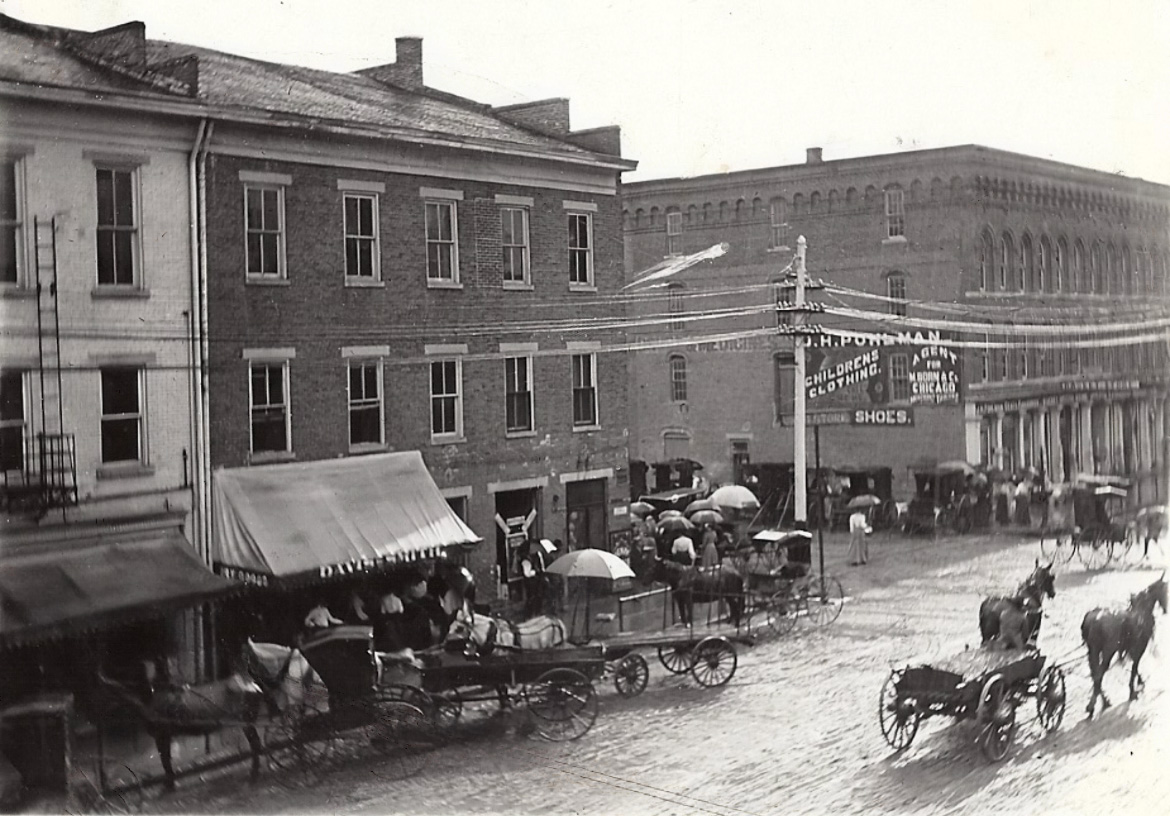
The building that currently houses Harrison’s Restaurant was built in 1854 by John and Robert Morrison in the Federal Influence style. Throughout its history, the building often housed more than one business at a time. It was first used for Yount and Jay’s General Store.
In 1869, an enthusiastic Tippecanoe City resident named A.W. Miles encouraged Joshua Horton to start a paper in their “boom town.” He agreed and began publishing a newspaper, the Tippecanoe Herald, in the second floor. Mr. Horton sold $2 annual subscriptions while standing on a box at the street corner. The newspaper would continue publishing in Tipp City for more than 110 years.
A dry goods store opened in the east room in 1898 and continued in that location until 1911. Part of the building became a drug store starting in 1906, which first operated as Ten Eyck’s Drug Store, then as Grant and Cooper Drugs, and later Fred Grant operated it alone. Between approximately 1913 and 1920, Carl Frings had a meat market in the back of the building, with a Second Street entrance.
A Kroger grocery store occupied part of the building in 1922, later becoming the Opps Grocery. In the 1920s the business was purchased and run by Louis Priller. During this same time, the J.H. Horton and Company had real estate offices on the second floor. In the early 1940s Bill Dorsey operated the grocery.
The third floor over the years has been the home of The Armory, the Tippecanoe Silver Band – active as far back as the Civil War, and the first Chamber of Commerce meetings took place here operating as The Businessmen’s masonic hall. In the late 1930s a restaurant was opened on the first floor of the building. Ownership of the restaurant changed several times. Owners included Charles Priller, who expanded the restaurant into a second room; Chuck Schlingman & Art Kirsch, the Moran family (1960s), Donald Croces (in the early 1970s), and the Sanos family. In 1975 Patrick Phelan began managing Paddy’s Tippecanoe Inn and purchased the building outright in 1980. Paddy’s operated into the 2000s. The restaurant was purchased and reopened as Harrison’s in 2006.
McConnaughey and Young Building
114-118 E MAIN STREET
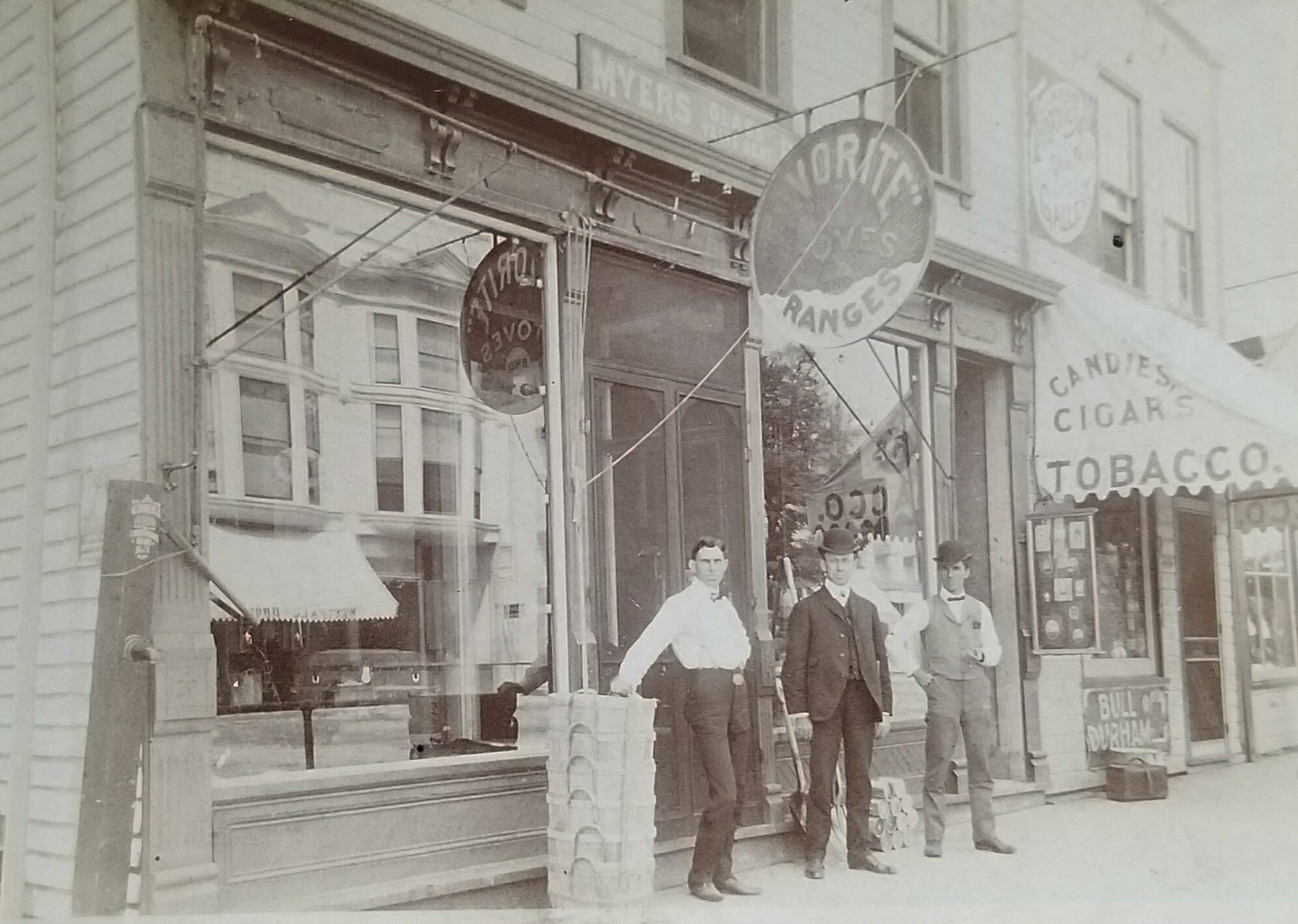
Built in 1871, this building was used for harness manufacturing and was named for its early owners, Mr. McConnaughey and Mr. Young. Other early uses of the building include a dry goods store, barber, news store, millinery shop and a telephone exchange office.
The eastern portion of the building, addressed as 118 E. Main Street, was occupied by several different hardware stores (owned by Timmers, Scharf and Baldwin, and John Benham) from the late 1800s through the mid-1960s. In 1966, the hardware store was converted to Fite’s Bakery that later became the Tipp Pastry Shop, then a jeans shop, followed by Sutton’s Upholstery. In 1978, James Gagnet opened Olde Tippecanoe Colours wallpaper store in this location.
The second floor, which has most recently been used as apartments, at one time housed a barber shop operated by Garfield Baldwin and Cooney Bowmaster and in 1944 housed a studio operated by Bowers and Son.
From 1990 to the present, the eastern portion of the building has been home to Browse Awhile Books. Some fanatics claim that Browse Awhile is haunted, and it appeared on the television series My Ghost Story. The building was damaged by a fire in June 2016 and after reconstruction, the bookstore reopened in June 2017. The western portion of the building, addressed as 114 E. Main Street and also 116 E. Main Street has been occupied by numerous businesses including Von Ashen’s shoe store; the Jackson Family’s sandwich shop and beer garden in the 1930s; Bob Thomas’ card room; Bake Staup and Les Eickhoff barber shop and Pearson’s Laundry in the 1940s; Ruby’s beauty shop in the 1960s; and William Kessler & Ron Logan’s attorney office from the 1960s to 1970s. This portion of the building was home to the Tippecanoe Frontier Trading Co. from 1980 to 2007. The Big Robot Cafe occupied this space from 2008 to 2010 followed by an antique store, and most recently Merchant 31 clothing store.
SAM & ETHEL’S RESTAURANT
120 E. MAIN STREET
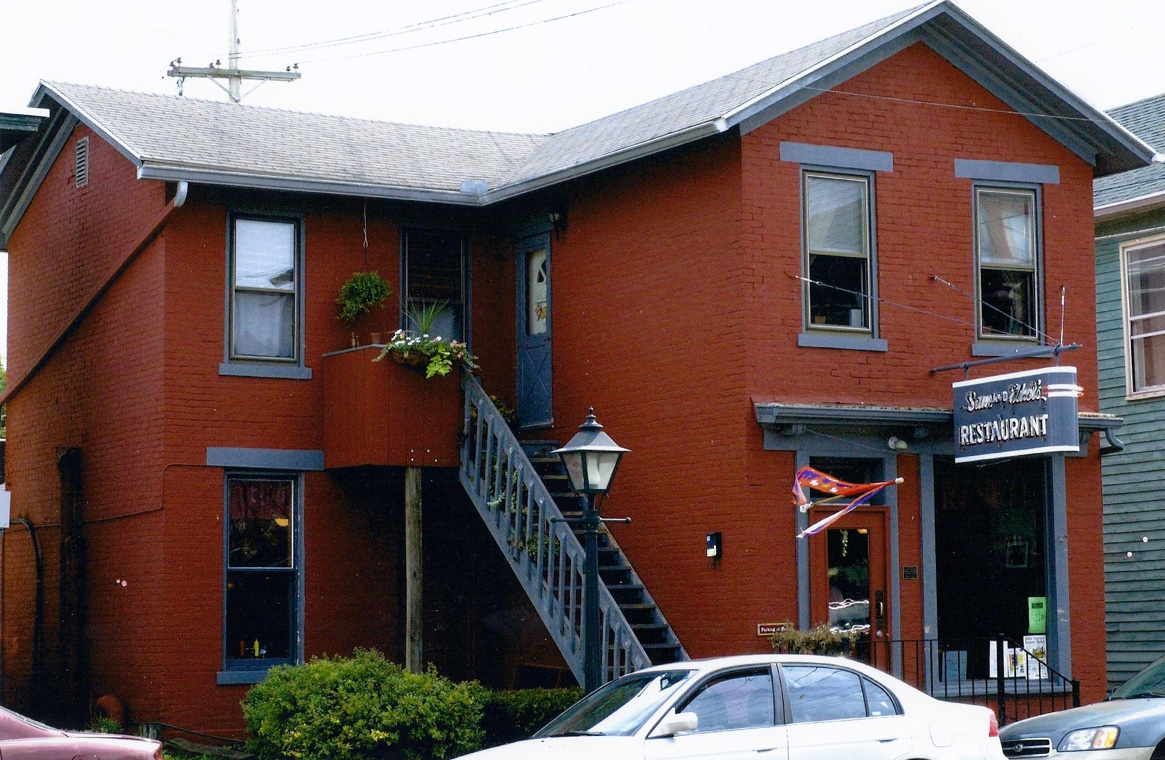
This building was built by Charles Koop in 1869. The Koop family lived and worked in the building, operating a boot and shoe making business until the early 1900’s.
The building, a two-story brick structure, includes an apartment on the second floor and commercial area on the first floor. Additionally, a barn-like structure had been attached to the rear of the building until about 1955. This structure was rented by the city for storage of trucks and snow plows.
Later, a plumbing and electric shop was operated by Burt Jackson and Elwood Gray in the building. As sponsors of the Tipp Merchants football team, they allowed the team to dress in the rear of the building. A beauty parlor was run by Ruth Sprecher from the second floor.
A bake shop was then located in the building for approximately seven years that was operated by Harry “Krid” Krieder. And in the 1940s, Nelson Grimm and Charles Smith started a creamery which was purchased and operated as Huffman’s Creamery.
Beginning in 1944, the building was used as a family restaurant run by Mr. and Mrs. Sam Pates, then by the Pickerings, followed by Bill and Flora Senseman. In 1947 it was purchased by “Ma and Pop” Pittingers and they ran a family restaurant until 1955 when Mary Belle Fulton bought it. She named the business L & C after her husband Clyde and son, Lloyd.
Sam and Ethel Moore purchased the building in 1957 and opened Sam and Ethel’s Restaurant, a name that has endured ever since. Their son, John (a 1958 graduate of Tippecanoe High School) took over the business in 1969 and the family operated it for over 30 years. Sam and Ethel’s Restaurant closed in 1999, reportedly due to lack of workers, but was reopened in the early 2000s by Debbie Mikolajewski. In 2009, Keith Long bought the restaurant and remodeled it to bring back the historic appearance of the restaurant, which included a tin ceiling and oak counter.
TIPP CITY EAGLES AERIE 2201
202 EAST MAIN STREET

Tipp City was founded in 1840, as Tippecanoe City, by John Clark. Mr. Clark was a farmer and worked the land just east of the canal near Main Street.
Mr. Clark was a member of the Whig political party and was a supporter of presidential candidate William Henry Harrison. In 1840, an estimated 100,000 people attended an “endorsing convention” held in Dayton for Mr. Harrison. At the time, Dayton had a population of less than 7,000. Enthusiasm was high for this event and Mr. Clark participated by erecting a temporary log cabin and hosting a party on the southeast corner of First and Main Streets. A log cabin was one of the symbols used in the campaign. The festivities included horse races, shooting matches, and wrestling.
In the aftermath, Mr. Clark decided to name the new town after the presidential campaign, which had the slogan “Tippecanoe and Tyler Too!” This noted both Harrison’s military victory at the Tippecanoe River and his running mate John Tyler.
In 1850 Mr. Clark built his home, which was patterned after the Maryland Governor’s Mansion, at the site of the 1840 log cabin festivities. The home featured luxuries such as a dumbwaiter that carried food food from the basement kitchen to the upstairs dining room.
After Mr. Clark passed away in 1857 his son, John Jr., and later his other descendants, lived in the home until the Fraternal Order of Eagles purchased it in 1937 for their Aerie, which it remains to this day.
The Eagles expanded the building in 1948 and 1970 to accommodate their growing membership and needs.
1889 BUGGY WHIP BUILDING
216 E MAIN STREET
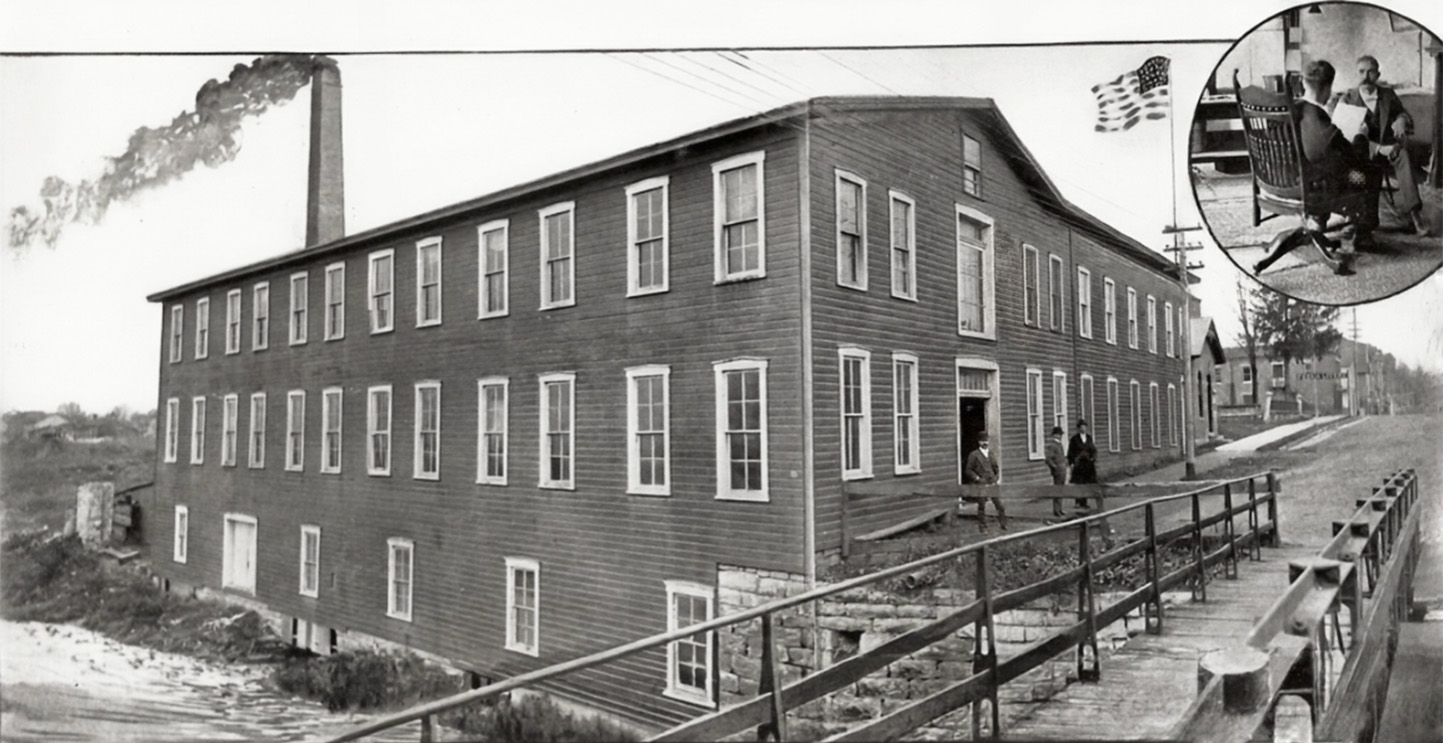
In 1889, A.L. Harshberger and and Frank Davis erected this building and started the Tipp Whip Co. to manufacture buggy whips. A buggy whip is used by a buggy driver to whip the horses pulling the buggy.
The factory was originally powered by water that flowed beneath the building along a mill race from the adjoining Miami-Erie Canal.
At one point, salesmen for the Tipp Whip Co. used an automobile to travel around and sell buggy whips, ironic, since automobiles replacing horse-drawn buggies would be the company’s ultimate downfall. The buggy whip has since become a symbol for anything that has been made hopelessly obsolete by a technological improvement.
The factory ceased operations at this location after the 1913 flood. In 1917, the building was sold to the Miami Conservancy District and the equipment was sold to the United States Whip Co. of Westfield, Massachusetts.
In 1935, the Senseman family opened a blacksmith and antique shop in the building. The antique store, named The Buggy Whip Antiques, operated through approximately 2010 by members of the Senseman family.
Before the buggy whip factory was built, the property had been the site of a linseed oil and grist mill that was destroyed by fire in 1883.
TIPP ROLLER MILL
225 E. MAIN STREET

The Tipp Roller Mill was built in 1839 by brothers Uriah and James John to produce flour. The mill is three stories tall and includes 9 bays. The best of the modern building materials of the time were used for its construction, including a covering of shiplap and weatherboard.
Water flowing through Tipp’s canal lock on the Miami-Erie Canal powered a rotating wooden wheel that was attached to wheat grinders inside the mill. This mechanism used rollers to crush the grain rather than the more commonly used mill stones. This system made the mill quite unique for its time. Years later, after that canal was no longer a viable source of power, a diesel engine was installed to drive the grinding rollers.
Over the years, the mill operated under various names including: The Tipp Roller Mill, The Paragon Mill, Ethel’s Mill, and Falls Milling. Flour produced at the Mill was sold under the brand names Snowball and Quality Flours. It was carried to distributors in Cincinnati via the canal.
The John brothers eventually sold the mill to another pair of brothers: John & Benjamin Herr. The Herr’s owned the mill for 36 years and enlarged the mill and its operations to include distribution in addition to Cincinnati to the the north and east.
The mill changed hands several times until 1897, when W.H. Ethell brought the mill. Ethell remodeled the mill as the community around it grew and began to flourish with the opening of numerous other manufacturers and businesses, including the Tipp Cannery which is still in operations.
The Miami Conservancy, a government-established Great Miami River management agency in Southwest Ohio, took over the mill in 1917. They leased it to various tenants while they were involved in some of the changes taking place in the town of Tippecanoe, including the closing of the canal and the elevation of Main Street in January of 1920.
The mill was privately owned once again in 1929 by Estey O. Mohr until he passed away and left it to his son, Donald Mohr, who operated it until 1938 when it was sold again.
The new owner and his wife, Charles and Eloise Poston, began the trend of antiques sales in Tipp City when they opened a charming Mill Antique Shop in 1942. It was at this time that the building ceased to operate as a mill. Several other business have since operated in the Tipp Roller Mill building including The Country Store Gift Shop operated by Elaine Samply, The T.L. Samply and Associates Real Estate office, and the Ginghamsburg United Methodist Church Clothes Line.
The Mill is now is used as a venue for theater and music performances; and it can be rented for weddings, parties, and other events.


